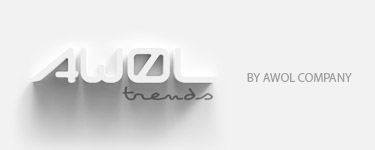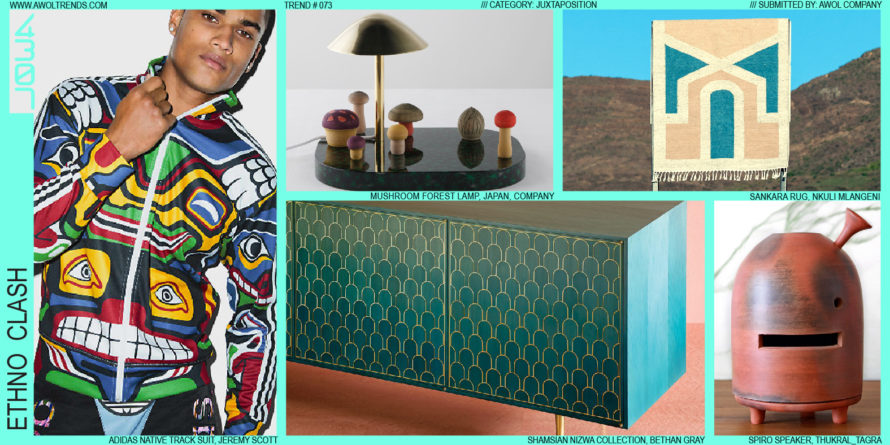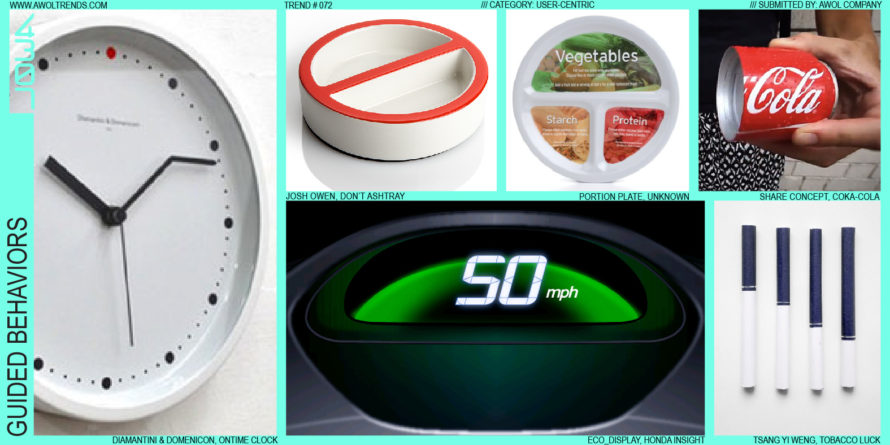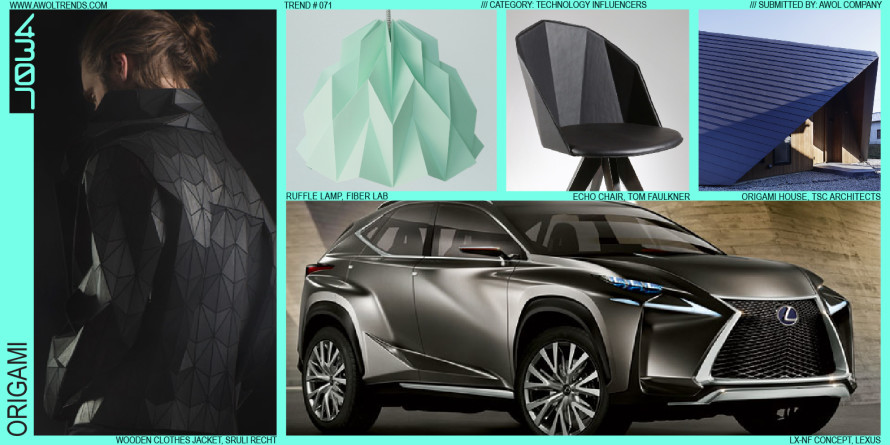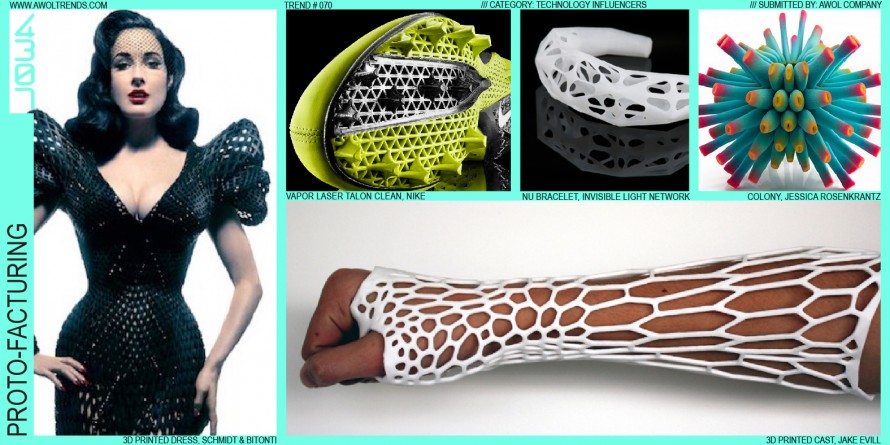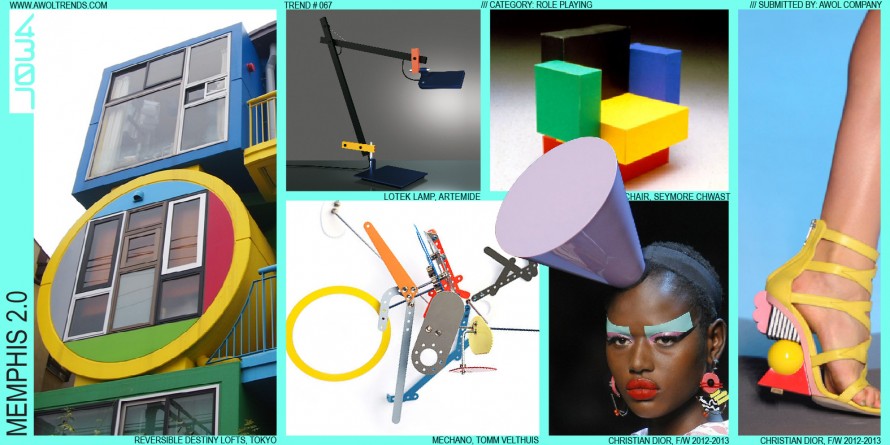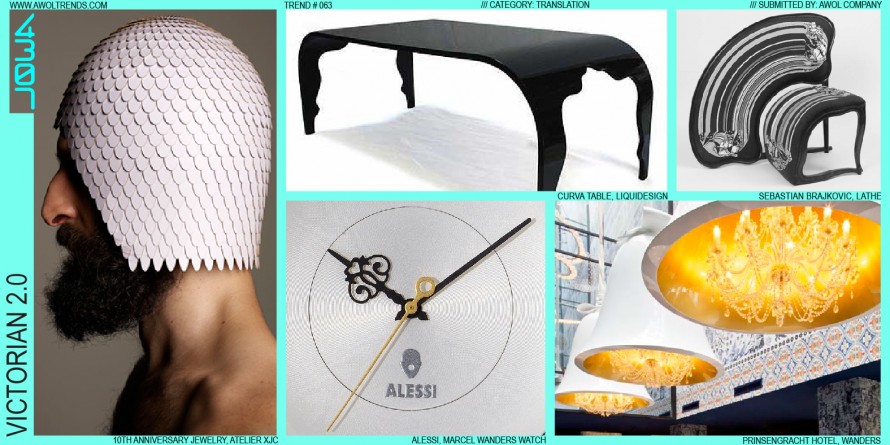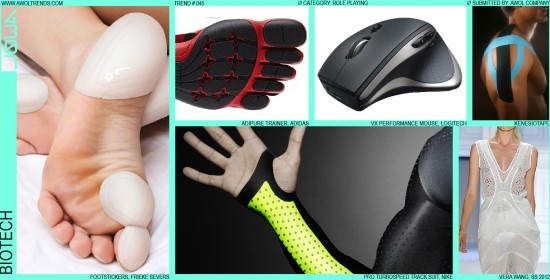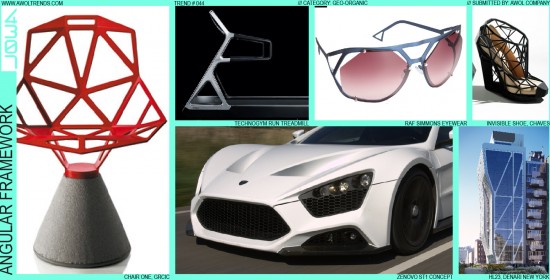One of the most exciting endeavors for designers in any category is the chance to work with a completely new medium. By exploring the unique nature of a novel material, or employing a new manufacturing process to an existing material, new materials and processes bring the potential of incredibly unique...
Read more
BIOTECH
The BioTech trend evolved as structural and material technologies began to intersect directly with the human form. Instead of considering tools as being externally operated by the human body, this aesthetic mode seeks to harmonize technology with the human form, creating a symbiotic relationship that is present in footwear, body-worn...
Read more
ANGULAR FRAMEWORK
Many industries have relied on forms constructed of rigid angular geometries for ages. From bicycles to bridges, designers and architects know the value of the inherent strength and economy of resources that characterize this method. In recent years, designers in many other categories have adopted Angular Frameworks in fresh and...
Read more
RATIONALISM
We humans like to make our mark on the world: building structures, manufacturing products, creating systems both physical and virtual. When not a purely artistic endeavor, these works of ours usually bear the signs of a rational thought process, as opposed to the more organic evolutionary structures preferred by nature...
Read more
ICONIC PIPING
Iconic designs can embed themselves as powerful symbols in our minds, having the mental stickiness to persist for decades in our collective memory. An icon can be created via any type of design element: pattern (like Burberry tartan), color (Kodak Yellow or John Deere Green), or brand mark (the Google...
Read more
MACRO PATTERNS
Up until recently, adorning entire surfaces with subtle repeating textures was only found in specific textile-based industries, such as handbags, footwear, and other fashion accessories. Seeing the luxurious visual properties inherent in a material like diamond-quilted black patent leather (as on the classic Chanel handbag), designers in other industries took...
Read more
WIREFORMS
This emerging trend is easy to describe: 1: visualize form, 2: make with wire. Some of Alexander Calder’s earliest works in the mid-20th century were wire sculptures, where a single piece of wire was bent using only hands and pliers into thousands of different forms, from portraits to animals (eventually...
Read more
ARCS & ELLIPSES
The use of Arcs and Ellipses to define physical shapes is a Declining Trend. For some perspective on this form/graphic design element’s origin: designers in the mid to late 1990s were extremely fond of putting arcs and ellipses on anything that wasn’t nailed down. The advent of 3D CAD modeling...
Read more
MODULAR ELEMENTS
Many ways to define a form are emerging that break away from the standard 2-piece clamshell that is common in all design categories. In the case of Modular Elements, the form is created through an assemblage of smaller forms: modules that stack and nestle together to construct a larger volume,...
Read more
MATERIAL REINTERPRETATION
The Reinterpretation category is all about manipulating a single visual attribute to achieve something both familiar and fresh at the same time. In this instance, Material Reinterpretation generally maintains all aspects of an iconic object’s form, proportions, and surfacing, but introduces a completely new material or production process to the...
Read more
